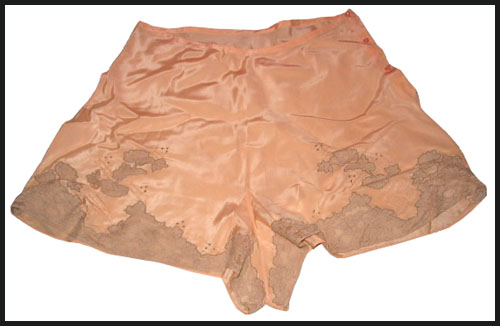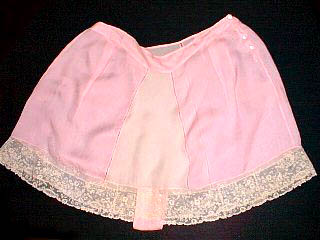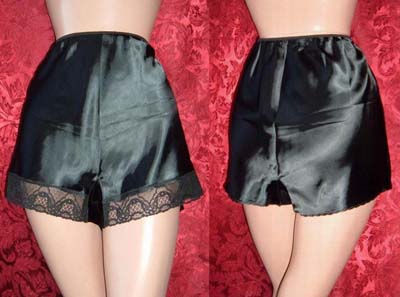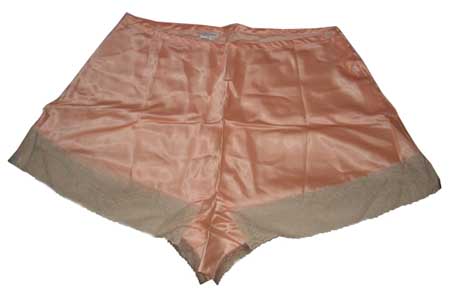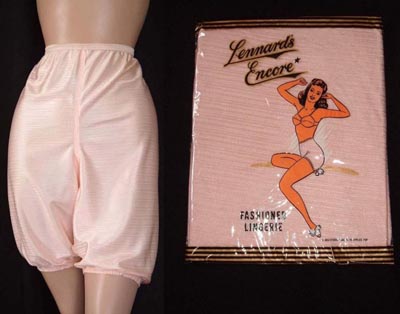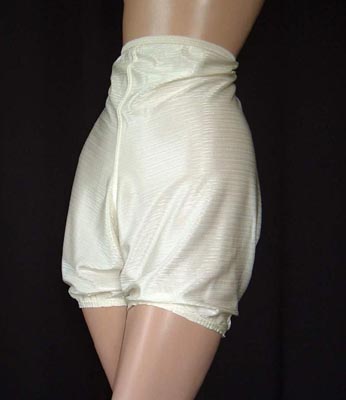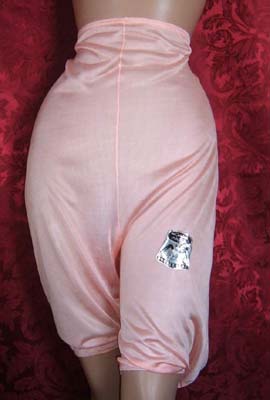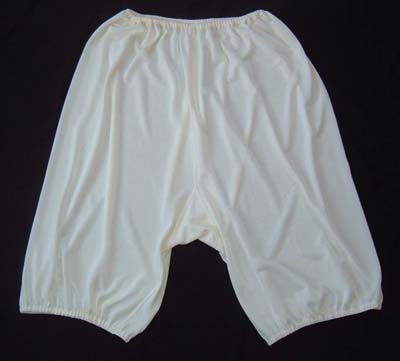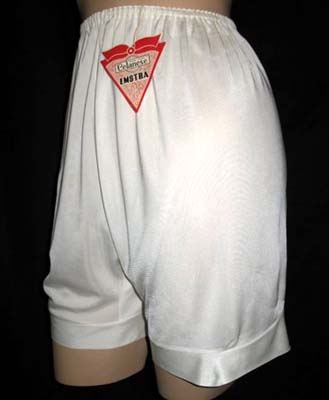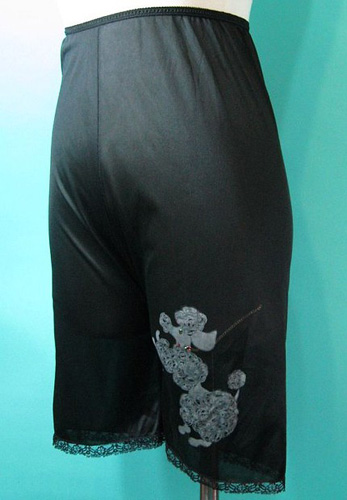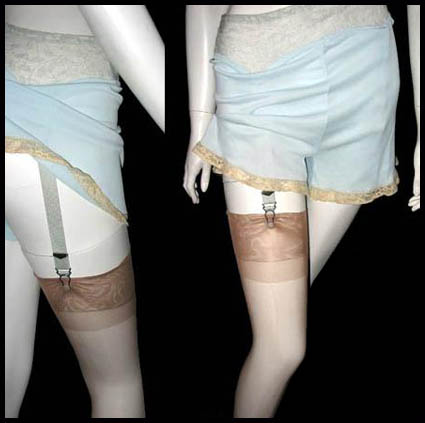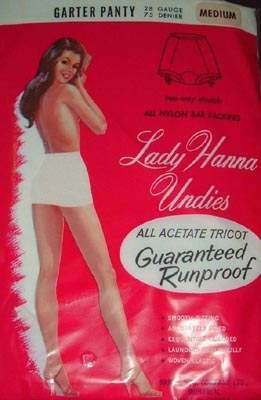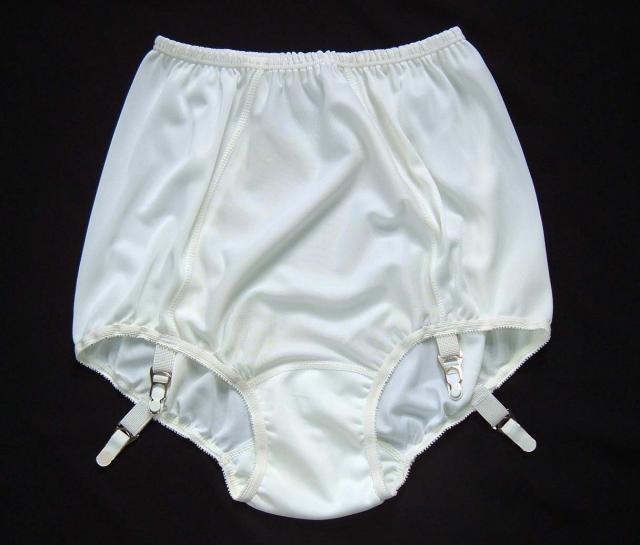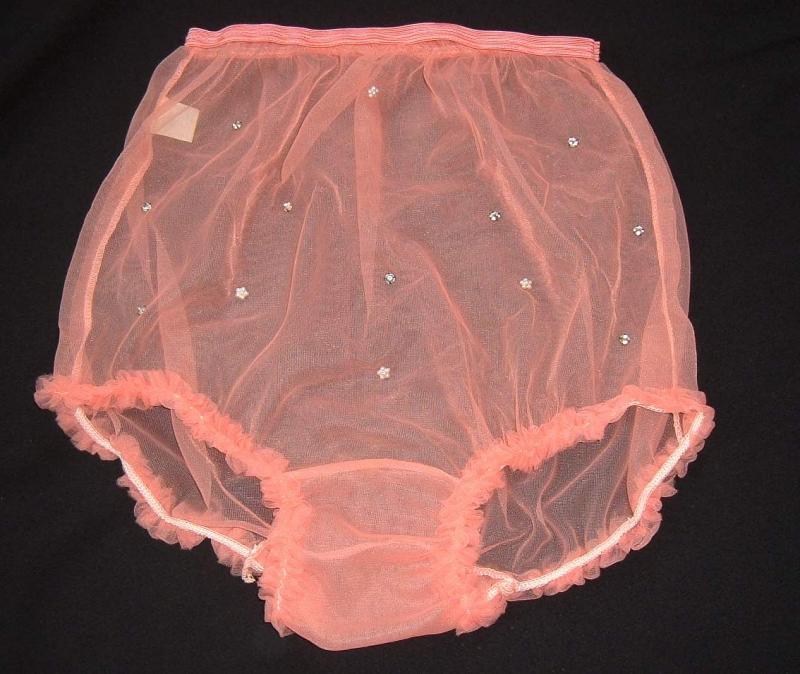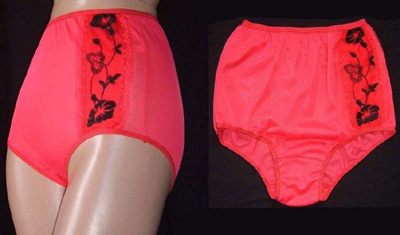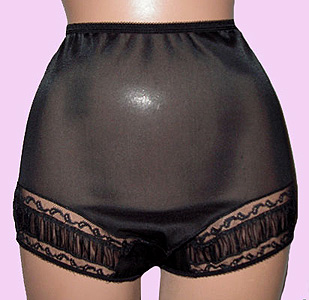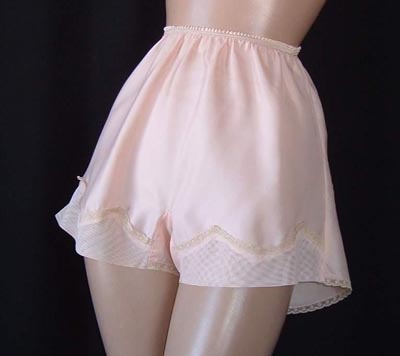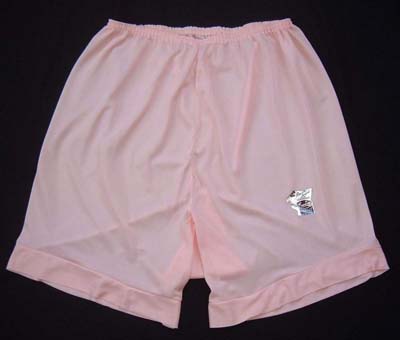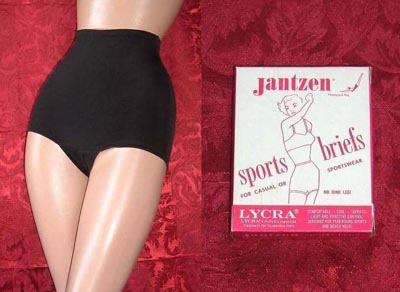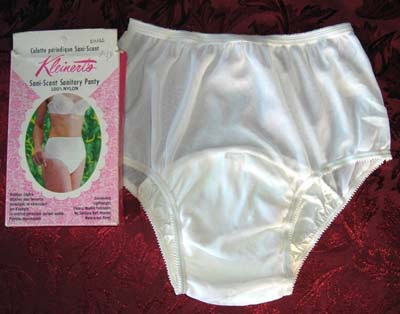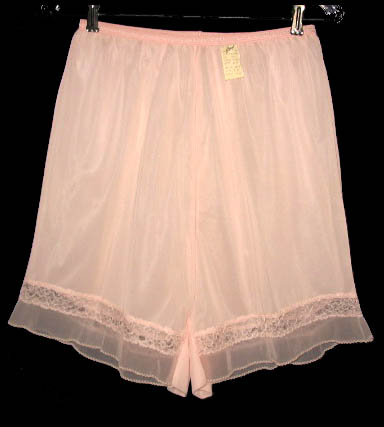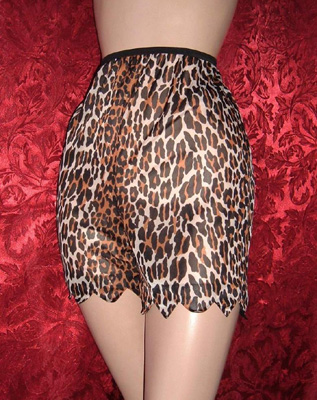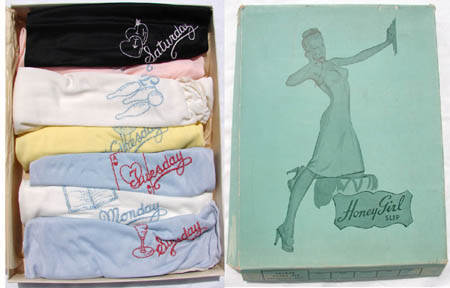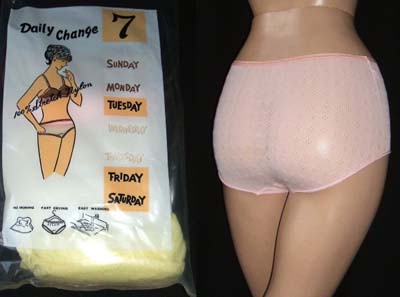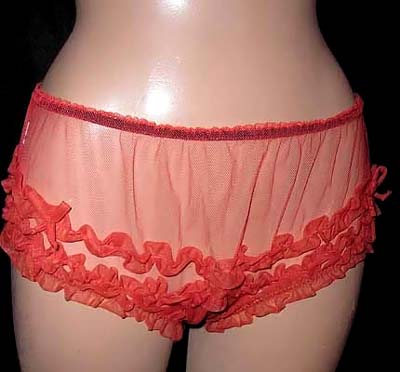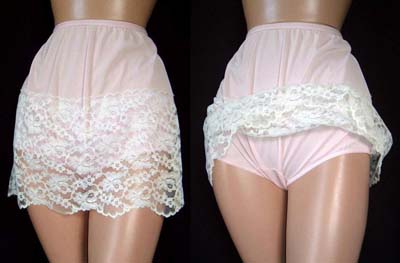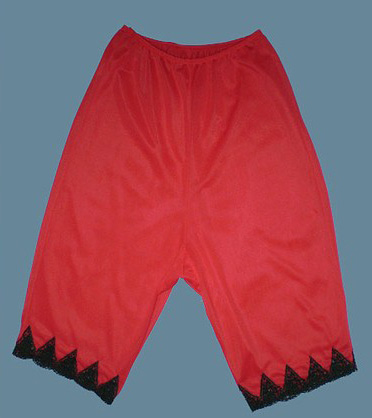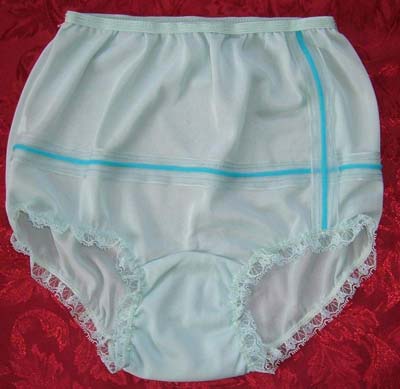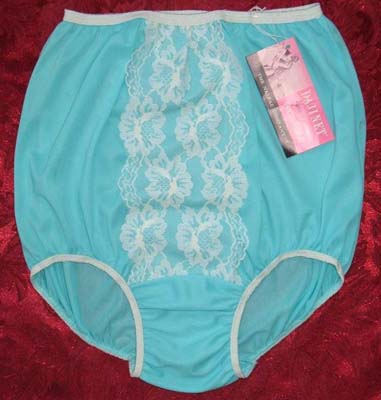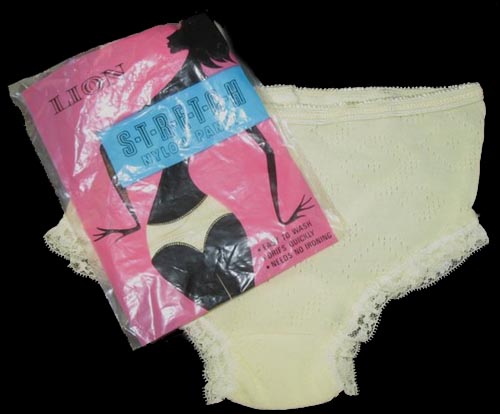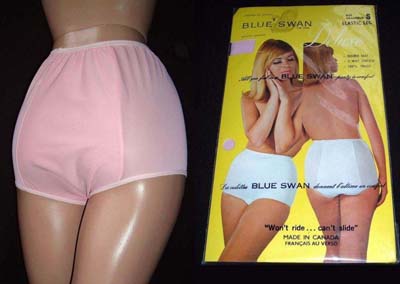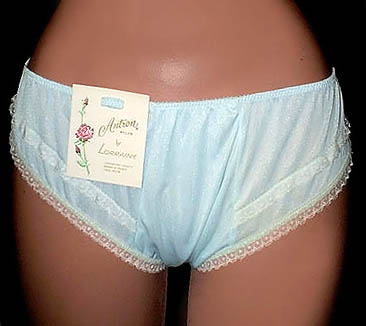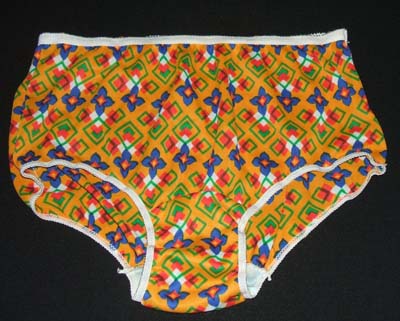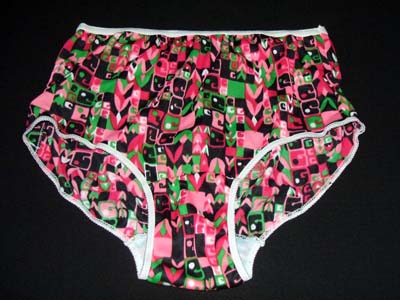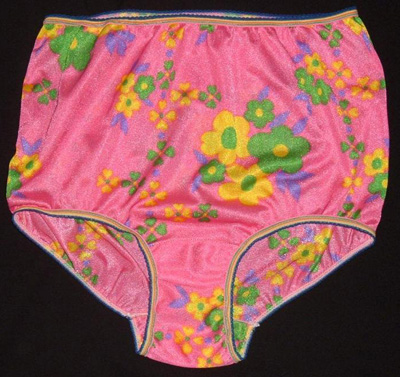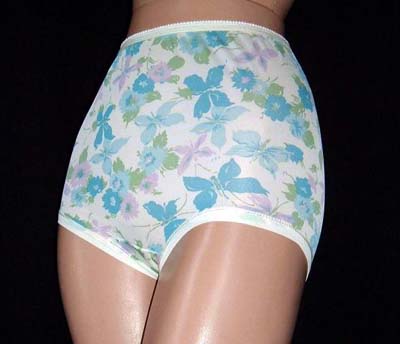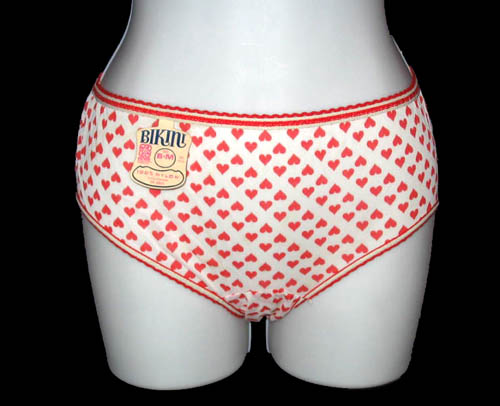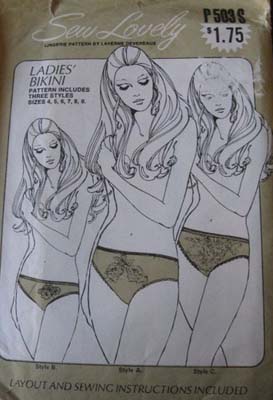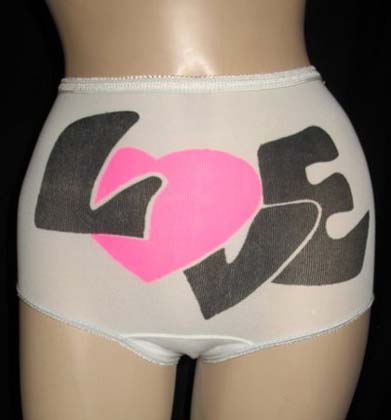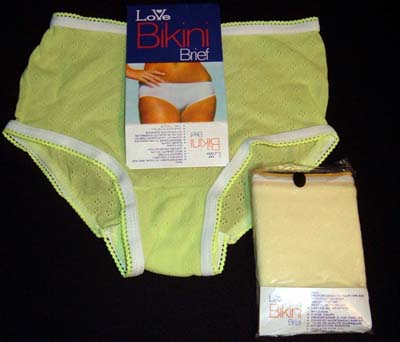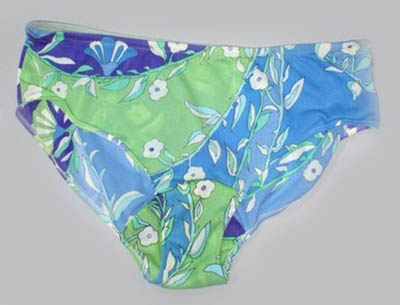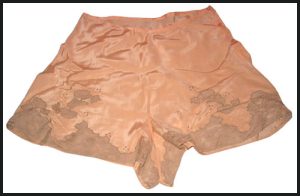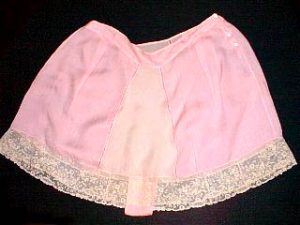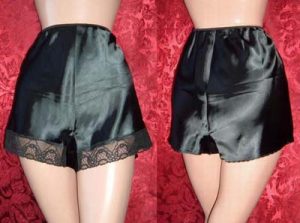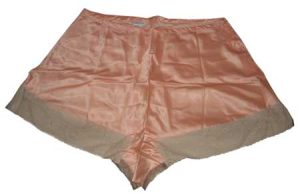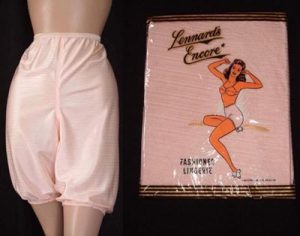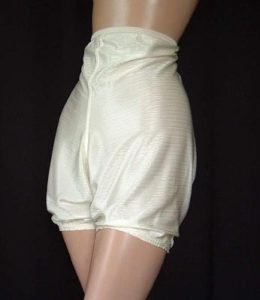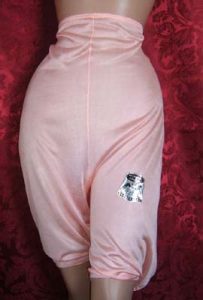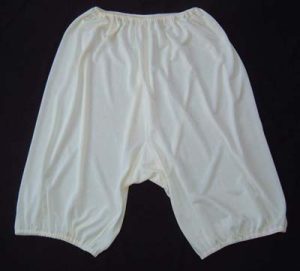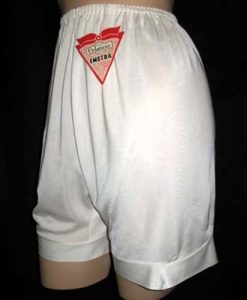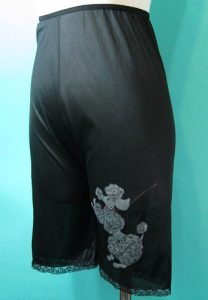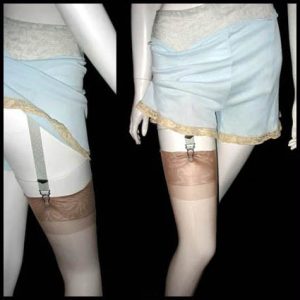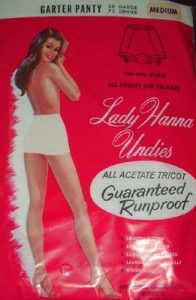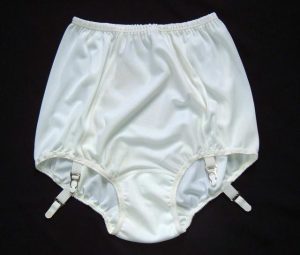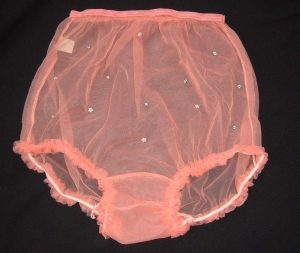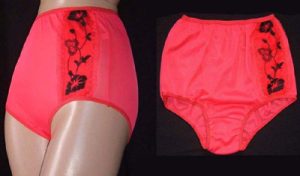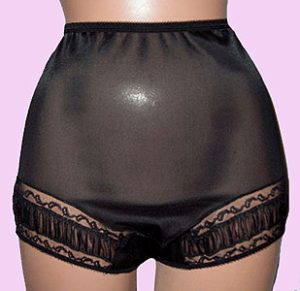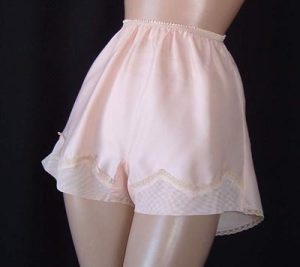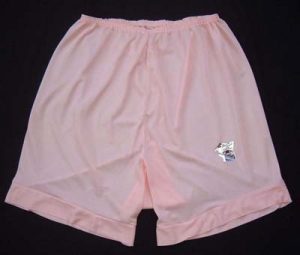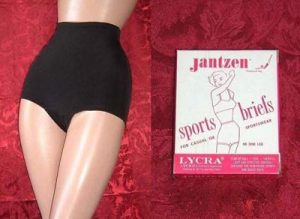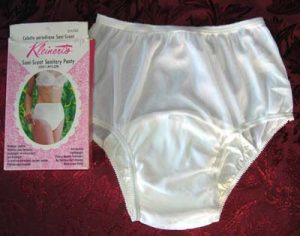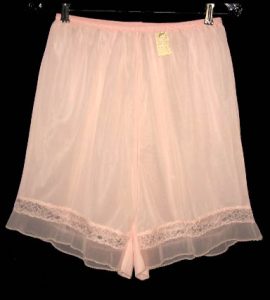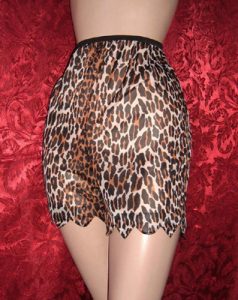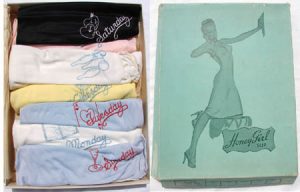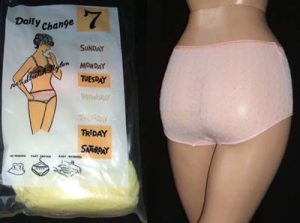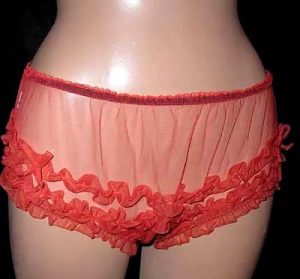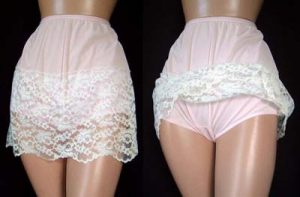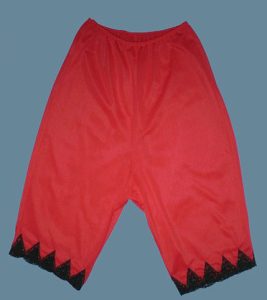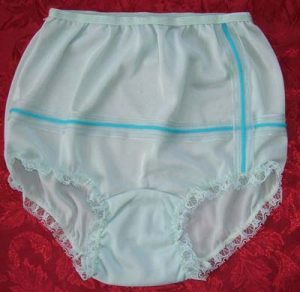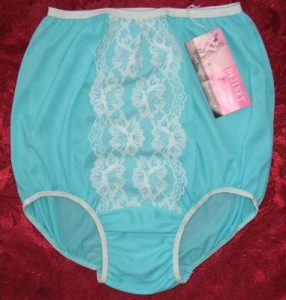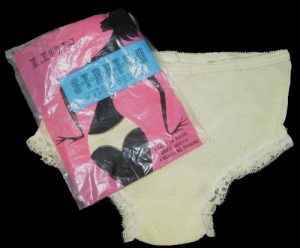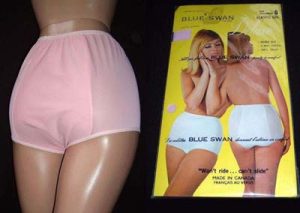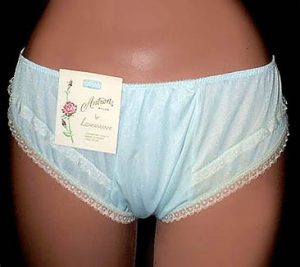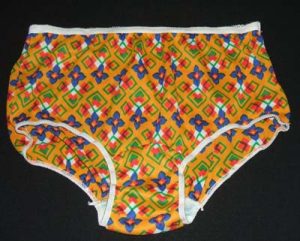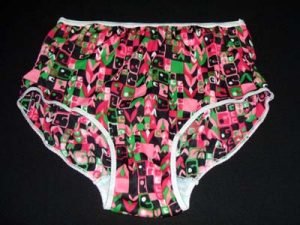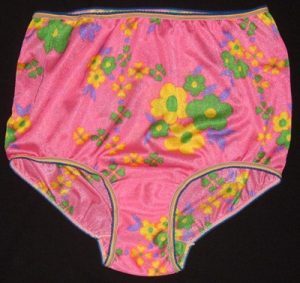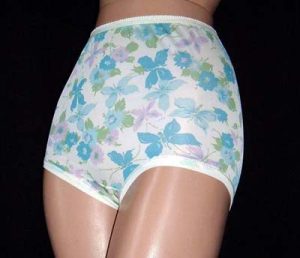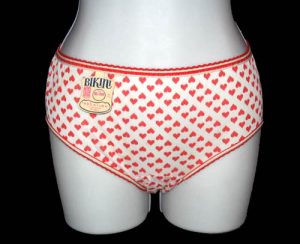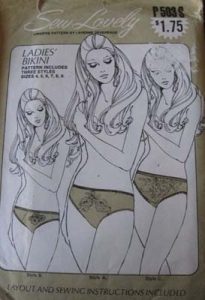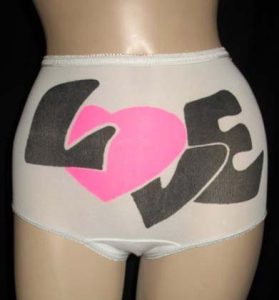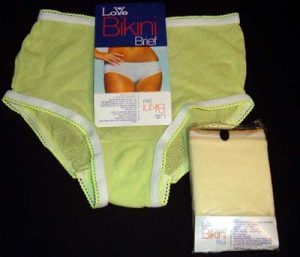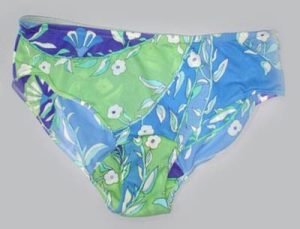During the 19th C, drawers developed from the long full length undergarment that could be seen at the hem of the dress into a knee length loose knicker like undergarment, closed at the center back or at both the front and back of the waist. They came in both open girth and closed girth variety, with the open considered more convenient and sanitary. These were usually cotton or linen with trimmings found at the hems in lace, tucks and white work. They went out of fashion as skirts slimmed down in the 1900s and the voluminous underwear of the Victorian age metamorphosed into the slim bra, panties and slips of the 1920s.
Amelia Jenks Bloomer championed the wear of Turkish inspired blouson pants. She designed the larger loose fitting drawers named bloomers. Bloomer was a famed women’s suffragist and a social trendsetter, and some sources attribute the invention of the bloomer to her, but most mention that she popularized and /or inspired them and her invention is mere social lore. In any case, the style caught on, and Gibson girls liked the bloomers for their free style when bicycling and playing tennis. These bloomers were intended as outerwear, not as undergarments.
By the 1920’s, the drawers developed into step-ins and tap pants, becoming much lighter and shorter. Tap pants has a short, but wide leg. Both were made in silk, rayon, chiffons as well as cotton and linen. This style lasted into the 1940s.
By the 1950’s, panties became more of a fashion statement.
Miscellaneous pantie notes for sellers:
- Look at the elastic waist, notice and mention that it is a much better quality than today’s elastic.
- Look for a mushroom gusset, as buyers seem to like the mushroom shaped gusset best. The gusset is the panel on the crotch area. This area is nylon in the earlier years.
- Buyers like the sheerest you can give them. Shown in a window against the sunlight is often a good way to display them.
- If you find a pair with ruffles in the back these are called rumba panties.
- Vanity Fair produced panties with what was called a pillow tab. This is a small satin square located on the elastic waist in the middle of the back. This is also desirable to buyers, so if your panties have that mention it in your description.
(NOTE: All panties with a pillow tab are not necessarily Vanity Fair. Some other brands use the pillow tab, like Lorraine ( Lorraine did put theirs on the side).
Written by Pauline Cameron/alonesolo/fashiontales with additional text by Hollis Jenkins-Evans/pastperfect2
